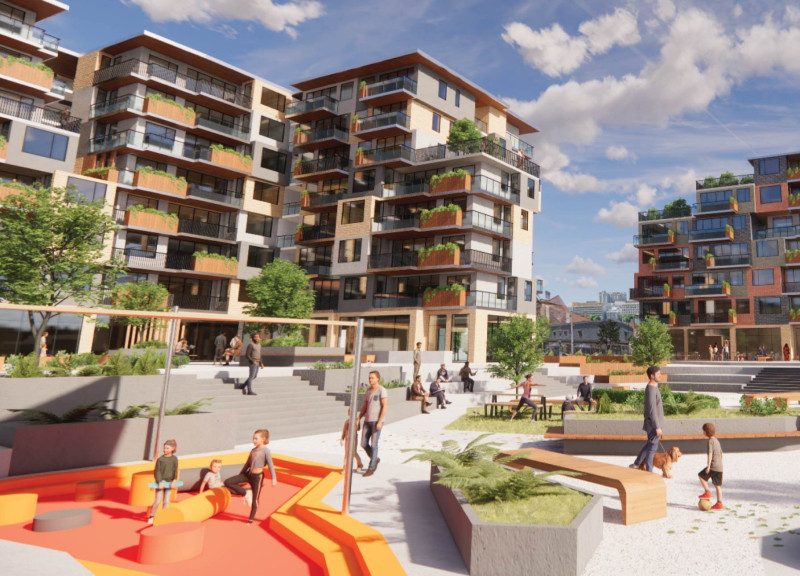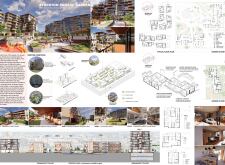5 key facts about this project
Enhancing Community Interaction
One of the defining features of Atherton Square Garden is its emphasis on community engagement. The layout features a central plaza that serves as the focal point for residents to gather, socialize, and participate in community activities. This communal space is equipped with performance areas and recreational zones, allowing for organized events that strengthen social ties. The project prioritizes pedestrian circulation, with pathways that encourage residents to move freely throughout the site and access shared facilities easily.
The architectural design incorporates townhouses with private balconies and shared gardens, fostering a sense of ownership while also supporting communal gatherings. Medium-rise apartments provide a different living experience, allowing for various family sizes and configurations. The design includes ample green spaces and play areas that cater to families, ensuring that outdoor experiences are accessible to all residents.
Sustainable Practices and Materials
The materials used in Atherton Square Garden play a crucial role in reinforcing sustainability throughout the project. A combination of concrete for structural integrity, wood for warmth in finishes, and glass to enhance natural lighting exemplifies a holistic approach to materiality. These choices not only enhance aesthetic values but also promote energy efficiency through passive design strategies.
The integration of natural elements within the architectural framework encourages a healthy lifestyle and connects residents with nature, which is often lacking in urban developments. The project effectively utilizes landscaping to create inviting outdoor spaces that complement the built environment, enhancing the overall livability of the area.
To gain a comprehensive understanding of Atherton Square Garden, the reader is encouraged to explore the architectural plans, architectural sections, architectural designs, and architectural ideas associated with this project. Detailed examinations of these elements will provide deeper insights into how the project successfully merges functionality with community-oriented design.























